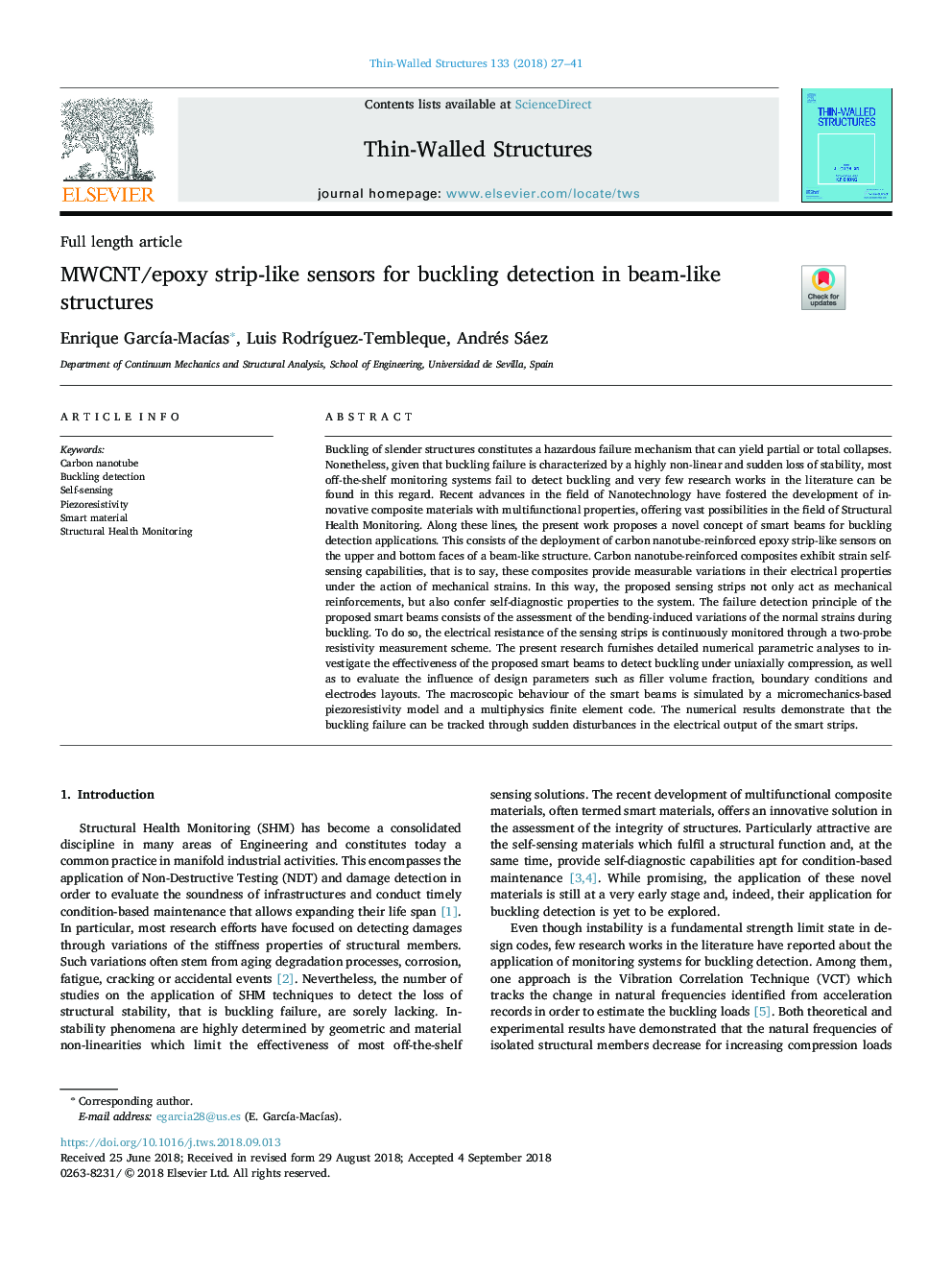| Article ID | Journal | Published Year | Pages | File Type |
|---|---|---|---|---|
| 10225466 | Thin-Walled Structures | 2018 | 15 Pages |
Abstract
Buckling of slender structures constitutes a hazardous failure mechanism that can yield partial or total collapses. Nonetheless, given that buckling failure is characterized by a highly non-linear and sudden loss of stability, most off-the-shelf monitoring systems fail to detect buckling and very few research works in the literature can be found in this regard. Recent advances in the field of Nanotechnology have fostered the development of innovative composite materials with multifunctional properties, offering vast possibilities in the field of Structural Health Monitoring. Along these lines, the present work proposes a novel concept of smart beams for buckling detection applications. This consists of the deployment of carbon nanotube-reinforced epoxy strip-like sensors on the upper and bottom faces of a beam-like structure. Carbon nanotube-reinforced composites exhibit strain self-sensing capabilities, that is to say, these composites provide measurable variations in their electrical properties under the action of mechanical strains. In this way, the proposed sensing strips not only act as mechanical reinforcements, but also confer self-diagnostic properties to the system. The failure detection principle of the proposed smart beams consists of the assessment of the bending-induced variations of the normal strains during buckling. To do so, the electrical resistance of the sensing strips is continuously monitored through a two-probe resistivity measurement scheme. The present research furnishes detailed numerical parametric analyses to investigate the effectiveness of the proposed smart beams to detect buckling under uniaxially compression, as well as to evaluate the influence of design parameters such as filler volume fraction, boundary conditions and electrodes layouts. The macroscopic behaviour of the smart beams is simulated by a micromechanics-based piezoresistivity model and a multiphysics finite element code. The numerical results demonstrate that the buckling failure can be tracked through sudden disturbances in the electrical output of the smart strips.
Related Topics
Physical Sciences and Engineering
Engineering
Civil and Structural Engineering
Authors
Enrique GarcÃa-MacÃas, Luis RodrÃguez-Tembleque, Andrés Sáez,
